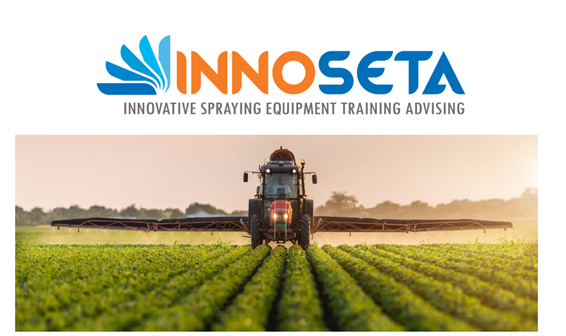Research project Accelerating Innovative practices for Spraying Equipment, Training and Advising in European agriculture through the mobilization of Agricultural Knowledge and Innovation Systems

General introduction
Which innovative spraying techniques for crop protection agents and good practices exist, how can we introduce them to the farmer, and help farmers to apply them? The aim of the INNOSETA project is to close the innovation gap that exists between the technological developers and the end users with a view to sustainable crop protection with minimal impact on the environment and human and animal health. This practical objective is central to the H2020 thematic network "INNOSETA", which brings together 15 European partners, ranging from research centers (including ILVO), agricultural organizations, and the largest European interest groups for both agricultural machinery and plant protection products. The network will work closely with EIP Agri and with existing EIP operational groups working in the various member states on crop protection and training.
Research approach
We bring the various players together for an open dialogue and questioning in the field of the correct application of crop protection products. This includes workshops at both local and European level. We unlock the relevant information online for all parties involved, via a comprehensive and easy-to-use database. It covers spraying techniques, training and advice and incorporates both commercial applications and results from research projects and literature. From the stakeholder survey we get deeper insight into the needs in the sector. Via the workshops and the online platform, new collaborations can be set up around the identified needs.
Relevance/Valorization
The INNOSETA network intends to communicate intensively and clearly to the (specialized) target group both at the meetings and via the information available on the online database and website. To promote cross-fertilization between countries, we create translations of existing technologies and training in the different languages of the project partners. This brings relevant innovations to the largest possible group, and a faster translation into practice. We expect that the intensive interaction between the various parties involved will lead to interesting research questions, which are better attuned to concrete needs. We also expect an acceleration in the development and implementation of innovative spraying techniques.
